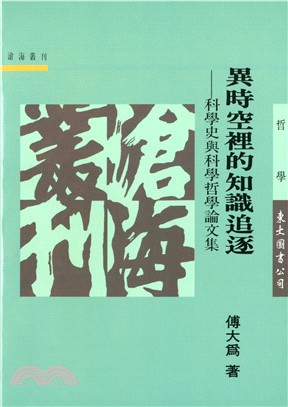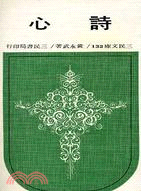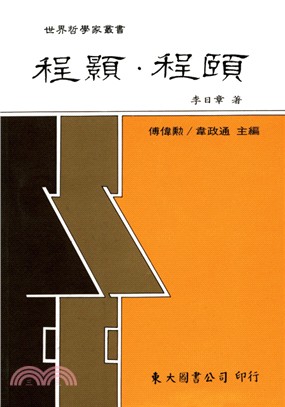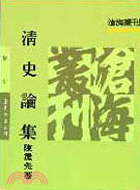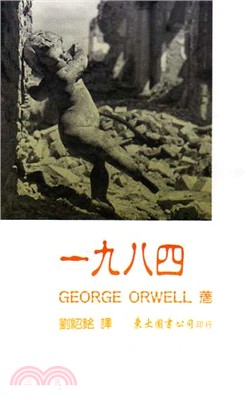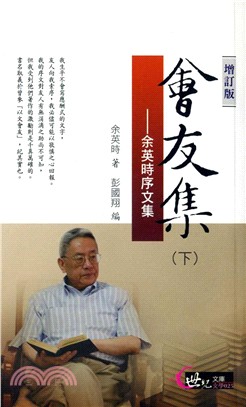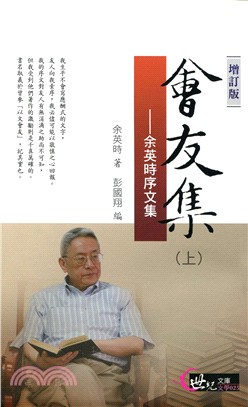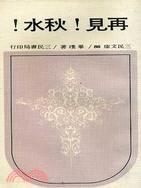A Concise Introduction To Additives For Thermoplastic Polymers
商品資訊
ISBN13:9780470609552
出版社:John Wiley & Sons Inc
作者:Fink
出版日:2009/12/07
裝訂/頁數:精裝/282頁
定價
:NT$ 7750 元優惠價
:90 折 6975 元
若需訂購本書,請電洽客服 02-25006600[分機130、131]。
商品簡介
作者簡介
目次
相關商品
商品簡介
Describes twenty-one of the most important and commonly used additives
A Concise Introduction to Additives for Thermoplastic Polymers focuses on additives for thermoplastic polymers and describes 21 of the most important and commonly used additives from Plasticizers and Fillers to Optical Brighteners and Anti-Microbial additives. It also includes chapters on safety and hazards, and prediction of service time models.
While there are many exhaustive and complex books dealing with additives for polymers, the size of them deter students and many industry engineers from using them. The purpose of this book, therefore, is to fill this void and present a concise introduction to this important subject.
Written in an accessible and practical style, the author introduces the reader to the complex subject of plastics additives in an engaging manner. His ability to be concise is the result of his teaching courses on the subject and using his own lecture notes for material. This book comprises the author's course notes so that a larger public can benefit from his knowledge.
A Concise Introduction to Additives for Thermoplastic Polymers is the ideal primer for students who will later work in polymer science or the development of plastics formulation, as well as industry engineers and specialists who want to have a deeper knowledge of the plastics industry.
A Concise Introduction to Additives for Thermoplastic Polymers focuses on additives for thermoplastic polymers and describes 21 of the most important and commonly used additives from Plasticizers and Fillers to Optical Brighteners and Anti-Microbial additives. It also includes chapters on safety and hazards, and prediction of service time models.
While there are many exhaustive and complex books dealing with additives for polymers, the size of them deter students and many industry engineers from using them. The purpose of this book, therefore, is to fill this void and present a concise introduction to this important subject.
Written in an accessible and practical style, the author introduces the reader to the complex subject of plastics additives in an engaging manner. His ability to be concise is the result of his teaching courses on the subject and using his own lecture notes for material. This book comprises the author's course notes so that a larger public can benefit from his knowledge.
A Concise Introduction to Additives for Thermoplastic Polymers is the ideal primer for students who will later work in polymer science or the development of plastics formulation, as well as industry engineers and specialists who want to have a deeper knowledge of the plastics industry.
作者簡介
JOHANNES KARL FINK is Professor of Macromolecular Chemistry at Montanuniversität, Loebem Austria. His career spans more than 30 years in the fields of polymers, including characterization, flame retardancy, and pyrolysis of polymers.
目次
1 Introduction.
1.1 Classification.
References.
2 Plasticizers.
2.1 Principle of Action.
2.2 Principle of Selection.
2.3 Characterization.
2.4 Risks and Drawbacks.
2.5 Classes of Plasticizers.
2.6 Specific Examples of Application.
References.
3 Fillers.
3.1 Surface Modification.
3.2 Special Applications.
References.
4 Colorants.
4.1 Physics Behind a Color.
4.2 Color Index.
4.3 Test Standards.
4.4 Pigments.
4.5 Organic Colorants.
References.
5 Optical Brighteners.
5.1 Basic Principles.
5.2 Measurement.
5.3 Inorganic Brighteners.
5.4 Organic Optical Brighteners.
References.
6 Antimicrobial Additives.
6.1 Modes of Action.
6.2 Plasticizers.
6.3 Special Formulations.
References.
7 Flame Retardants.
7.1 Mechanisms of Flame Retardants.
7.2 Smoke Suppressants.
7.3 Admixed Additives.
7.4 Bonded Additives.
References.
8 Lubricants.
8.1 Principle of Action.
8.2 Methods of Incorporation.
8.3 Types of Lubricants.
8.4 Special Applications.
References.
9 Antistatic Additives.
9.1 Types of Additives.
9.2 Areas of Application.
9.3 Additives in Detail.
References.
10 Slip Agents.
10.1 Basic Principles of Action.
10.2 Compounds.
10.3 Special Formulations.
References.
11 Surface Improvers.
11.1 Additives.
References.
12 Nucleating Agents.
12.1 Crystalline Polymers.
12.2 Experimental Methods.
12.3 Classes of Nucleating Agents.
12.4 Crystallization Accelerators.
12.5 Clarifying Agents.
References.
13 Antifogging Additives.
13.1 Field of Use.
13.2 Principles of Action.
13.3 Conventional Compounds.
13.4 Compounds for Grafting.
References.
14 Antiblocking Additives.
14.1 Examples of Uses.
References.
15 Hydrolysis.
15.1 Hydrolytic Degradation.
15.2 Polymers.
References.
16 Dehydrochlorination Stabilizers.
16.1 Dehydrochlorination of PVC.
16.2 Stabilizers.
16.2.1Alkyl Tin Compounds.
References.
17 Acid Scavengers.
17.1 Acid Scavenging.
17.2 Examples of Formulation.
References.
18 Metal Deactivators.
18.1 Action of Metals in Polymers.
18.2 Usage.
18.3 Examples of Metal Deactivators.
References.
19 Oxidative Degradation.
19.1 Autoxidation.
19.2 Inhibition of Autoxidation.
References.
20 Degradation by Light.
20.1 Photolysis.
20.2 Photooxdation.
20.3 UV Stabilizers.
References.
21 Blowing Agents.
21.1 Blowing Agents.
21.2 Ozone Depletion Potential.
21.3 Test Methods.
21.4 Special Applications.
References.
22 Compatibilizers.
22.1 Estimation of Compatibility.
22.2 Compatibilizers.
22.3 Special Examples.
References.
23 Prediction of Service Time.
23.1 Accelerated Aging.
23.2 Theory of Critical Distances.
23.3 Monte Carlo Methods.
23.4 Issues in Matrix Composites.
References.
24 Safety and Hazards.
24.1 Plasticizers.
24.2 Flame Retardants.
24.3 Antifogging Agents.
24.4 Other.
References.
Index.
Acronyms.
Chemicals.
General Index.
1.1 Classification.
References.
2 Plasticizers.
2.1 Principle of Action.
2.2 Principle of Selection.
2.3 Characterization.
2.4 Risks and Drawbacks.
2.5 Classes of Plasticizers.
2.6 Specific Examples of Application.
References.
3 Fillers.
3.1 Surface Modification.
3.2 Special Applications.
References.
4 Colorants.
4.1 Physics Behind a Color.
4.2 Color Index.
4.3 Test Standards.
4.4 Pigments.
4.5 Organic Colorants.
References.
5 Optical Brighteners.
5.1 Basic Principles.
5.2 Measurement.
5.3 Inorganic Brighteners.
5.4 Organic Optical Brighteners.
References.
6 Antimicrobial Additives.
6.1 Modes of Action.
6.2 Plasticizers.
6.3 Special Formulations.
References.
7 Flame Retardants.
7.1 Mechanisms of Flame Retardants.
7.2 Smoke Suppressants.
7.3 Admixed Additives.
7.4 Bonded Additives.
References.
8 Lubricants.
8.1 Principle of Action.
8.2 Methods of Incorporation.
8.3 Types of Lubricants.
8.4 Special Applications.
References.
9 Antistatic Additives.
9.1 Types of Additives.
9.2 Areas of Application.
9.3 Additives in Detail.
References.
10 Slip Agents.
10.1 Basic Principles of Action.
10.2 Compounds.
10.3 Special Formulations.
References.
11 Surface Improvers.
11.1 Additives.
References.
12 Nucleating Agents.
12.1 Crystalline Polymers.
12.2 Experimental Methods.
12.3 Classes of Nucleating Agents.
12.4 Crystallization Accelerators.
12.5 Clarifying Agents.
References.
13 Antifogging Additives.
13.1 Field of Use.
13.2 Principles of Action.
13.3 Conventional Compounds.
13.4 Compounds for Grafting.
References.
14 Antiblocking Additives.
14.1 Examples of Uses.
References.
15 Hydrolysis.
15.1 Hydrolytic Degradation.
15.2 Polymers.
References.
16 Dehydrochlorination Stabilizers.
16.1 Dehydrochlorination of PVC.
16.2 Stabilizers.
16.2.1Alkyl Tin Compounds.
References.
17 Acid Scavengers.
17.1 Acid Scavenging.
17.2 Examples of Formulation.
References.
18 Metal Deactivators.
18.1 Action of Metals in Polymers.
18.2 Usage.
18.3 Examples of Metal Deactivators.
References.
19 Oxidative Degradation.
19.1 Autoxidation.
19.2 Inhibition of Autoxidation.
References.
20 Degradation by Light.
20.1 Photolysis.
20.2 Photooxdation.
20.3 UV Stabilizers.
References.
21 Blowing Agents.
21.1 Blowing Agents.
21.2 Ozone Depletion Potential.
21.3 Test Methods.
21.4 Special Applications.
References.
22 Compatibilizers.
22.1 Estimation of Compatibility.
22.2 Compatibilizers.
22.3 Special Examples.
References.
23 Prediction of Service Time.
23.1 Accelerated Aging.
23.2 Theory of Critical Distances.
23.3 Monte Carlo Methods.
23.4 Issues in Matrix Composites.
References.
24 Safety and Hazards.
24.1 Plasticizers.
24.2 Flame Retardants.
24.3 Antifogging Agents.
24.4 Other.
References.
Index.
Acronyms.
Chemicals.
General Index.
主題書展
更多
主題書展
更多書展今日66折
您曾經瀏覽過的商品
購物須知
外文書商品之書封,為出版社提供之樣本。實際出貨商品,以出版社所提供之現有版本為主。部份書籍,因出版社供應狀況特殊,匯率將依實際狀況做調整。
無庫存之商品,在您完成訂單程序之後,將以空運的方式為你下單調貨。為了縮短等待的時間,建議您將外文書與其他商品分開下單,以獲得最快的取貨速度,平均調貨時間為1~2個月。
為了保護您的權益,「三民網路書店」提供會員七日商品鑑賞期(收到商品為起始日)。
若要辦理退貨,請在商品鑑賞期內寄回,且商品必須是全新狀態與完整包裝(商品、附件、發票、隨貨贈品等)否則恕不接受退貨。














